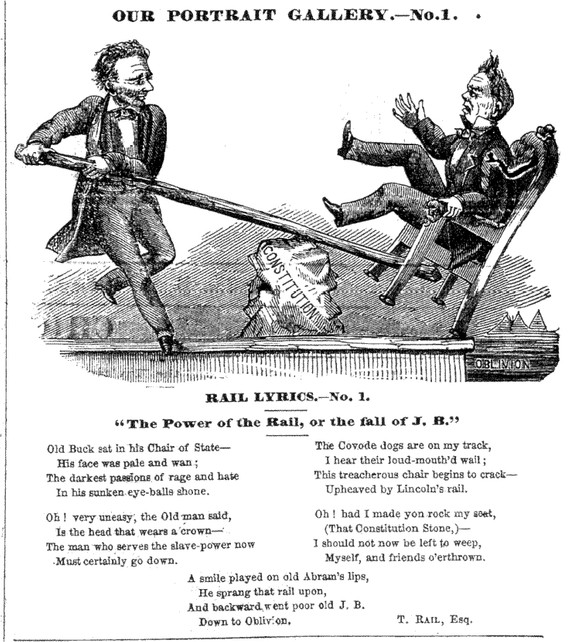
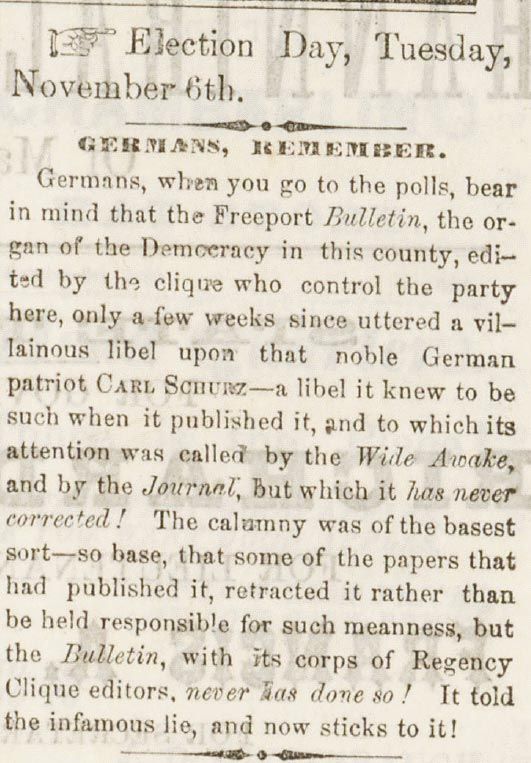


Abraham Lincoln Campaign Newspapers from 1860 to 1864
$19.50
Description
Lincoln’s 1860 and 1864 Presidential Campaigns
Timeline of Main Events
- Pre-1854: Abraham Lincoln is a member of the Whig party.
- 1847-1849: Abraham Lincoln serves as a member of the U.S. House of Representatives from Illinois’ 7th district.
- 1854: Lincoln becomes involved in Illinois state Republican Party politics.
- 1856: At the Republican National Convention, Lincoln is a runner-up for the Vice Presidential nomination.
- 1858: Abraham Lincoln runs for U.S. Senate from Illinois, facing Stephen A. Douglas. They engage in seven public debates (the Lincoln-Douglas Debates). Douglas is re-elected by the Illinois legislature.
- February 27, 1860: Abraham Lincoln delivers a speech at Cooper Union in New York City, sponsored by the Young Men’s Republican Union. This speech is later credited as a pivotal moment in his presidential campaign.
- April 1860: The Democratic Party splits during its national convention in Charleston, South Carolina, due to disagreements over slavery. Southern delegates withdraw and nominate their own candidate.
- June 1860 – October 1860: The Rail Splitter newspaper is published in Chicago, Illinois.
- June 19, 1860 – October 2, 1860: The serial tract “Lincoln and Liberty!!!” is published by the Young Men’s Republican Union of New York City.
- August 18, 1860 – November 17, 1860: The Freeport Wide Awake campaign newspaper is published in support of Abraham Lincoln.
- November 6, 1860: Presidential election. Abraham Lincoln wins with 39.9% of the popular vote and 180 electoral votes. Stephen Douglas, John C. Breckinridge, and John Bell also receive votes.
- 1860-1864: The Civil War disrupts the political landscape. The Republican Party rebrands as the National Union Party in an attempt to attract Northern Democrats.
- 1864: The Democratic party nominates George McClellan as a peace candidate, while the National Union Party re-nominates Abraham Lincoln.
- September 8, 1864 – November 5, 1864: The Campaign Dial newspaper is published daily in support of Lincoln’s reelection.
- 1864 The Kentucky Campaign newspaper is published in support of John C. Breckinridge.
- November 8, 1864: Presidential election. Abraham Lincoln wins re-election with 55% of the popular vote and 212 electoral votes.
- Post 1864 Elections: Campaign newspapers such as the Freeport Wide Awake, The Rail Splitter, and The Campaign Dial cease publication.
Cast of Characters
- Abraham Lincoln: Republican candidate and later National Union candidate for President of the United States. Former member of the U.S. House of Representatives from Illinois (1847-1849), and Illinois lawyer. He was considered a moderate on the issue of slavery in 1860. Elected President in 1860 and re-elected in 1864.
- William H. Seward: United States Senator and former Governor of New York. A leading Republican candidate for president in 1860 who lost out to Lincoln for the nomination. Later became United States Secretary of State.
- Salmon P. Chase: Governor of Ohio and a leading Republican candidate for president in 1860. He later became United States Secretary of the Treasury.
- Edward Bates: Missouri lawyer and politician. Republican candidate for president in 1860. Later served as United States Attorney General.
- Horace Greeley: Founder and editor of The New York Tribune. Former member of the U.S. House of Representatives. Republican candidate for president in 1860.
- Stephen A. Douglas: Democratic U.S. Senator from Illinois. Advocated popular sovereignty on the issue of slavery. Leading Democratic candidate for President in 1860. Lost re-election to the U.S. Senate in 1858.
- John C. Breckinridge: Vice President of the United States. Nominee of Southern Democrats for President in 1860.
- John Bell: Former United States Senator from Tennessee. Nominee of the Constitutional Union Party for President in 1860.
- Charles Leib: Publisher of the Rail Splitter newspaper in Chicago. A former supporter of James Buchanan.
- James Buchanan: President of the United States prior to Abraham Lincoln, seen by Leib as a “tool of slavery propagandists.”
- George B. McClellan: Union Major General who was the Democratic Party nominee for president in 1864. He was a “peace candidate” who campaigned on the cessation of hostilities with the Confederacy.
Abraham Lincoln Campaign Newspapers 1860 – 1864
This collection contains 518 pages of campaign newspapers from Abraham Lincoln’s elections in 1860 and 1864.
During this period, many newspapers adopted clear partisan stances, often evident in their titles. The publications in this collection were not only politically biased; they were specifically established to support Lincoln’s election or re-election as President and ceased to operate afterward.
Election 1860
In 1860, the United States had three main political parties: the Republican Party, the Democratic Party, and the newly formed Constitutional Union Party. The Democratic Party divided into two factions due to disagreements over slavery, resulting in a four-candidate race.
At that time, Abraham Lincoln was the least recognized candidate for the Republican Party nomination.
The most prominent contender was William H. Seward, a United States Senator, former governor of New York, and future Secretary of State. Following him was Salmon P. Chase, the governor of Ohio and future Secretary of the Treasury. Edward Bates, a lawyer from Missouri and future Attorney General, ranked third. Fourth was Horace Greeley, the founder and editor of The New York Tribune, a former member of the U.S. House of Representatives, and later the initiator of the Liberal Republican Party in 1872. Lastly, there was Abraham Lincoln, an attorney from Illinois who previously served in the U.S. House of Representatives from Illinois’ 7th district (1847 – 1849). Lincoln, who was previously a member of the Whig Party, became involved in Illinois Republican Party politics in 1854. At the Republican National Convention in 1856, he finished second in the race for the Vice Presidential nomination. In 1858, Lincoln aimed to take the seat from the current Democratic U.S. Senator from Illinois, Stephen A. Douglas. They engaged in a series of seven debates. That year, U.S. senators were chosen by state legislatures, and Democrats secured a narrow majority in the Illinois General Assembly, allowing them to re-elect Douglas. Although Lincoln lost due to the dynamics within the party, his participation in the Lincoln-Douglas debates earned him significant public attention, positioning him as a contender among Republican candidates in 1860.
As the Republican primary progressed, candidates gradually withdrew from the race. It was agreed that Greely was too erratic, Bates was considered too aged, and Chase lacked political acumen. Ultimately, Lincoln prevailed over Seward, whose strong opinions on the expansion of slavery led many to view him as too extreme. Conversely, Lincoln was perceived as a more moderate choice regarding slavery, and it was believed that his Illinois roots would attract western voters.
In April 1860, during its national convention held in Charleston, South Carolina, the Democratic Party fractured into two factions. The frontrunner for the Democratic nomination was Illinois Senator Stephen Douglas, who supported the concept of popular sovereignty, allowing states to determine the legality of slavery themselves. This stance infuriated many Southern Democrats, who wanted assurances for maintaining slavery in new territories and upcoming states. As a result, delegates from eight southern states left the convention and nominated their own candidate, John C. Breckinridge, who was then serving as Vice President of the United States. A faction of conservative former Whigs, alongside members of the Know Nothing party and some Southern Democrats opposed to secession, came together to establish the Constitutional Union Party. Their platform vocally condemned disunion and steered clear of the slavery debate. They nominated John Bell, a former U.S. Senator from Tennessee.
On Election Day, November 6, 1860, Republican candidate Lincoln garnered 39.9 percent of the popular, Northern Democrat Douglas received 29.5 percent, Southern Democrat Breckinridge obtained 18.1 percent, and Constitutional Unionist Bell achieved 12.5 percent. In the Electoral College, Lincoln secured 180 electoral votes, while Breckinridge captured 72 out of the 303 total electoral votes available.
The Freeport Wide Awake newspaper published 52 pages over 13 issues from August 18, 1860, to November 17, 1860. This weekly campaign publication was released between the Chicago Convention and after the November election, supporting Abraham Lincoln and other Republican candidates. Its motto was “No slumber till the battle is won.” Three additional newspapers featuring “Wide Awake” in their names were produced in 1860 in Providence, De Witt, Iowa, and Akron, with only one known existing copy of any issue from these other publications.
During the 1850s, the Republican Party established marching clubs comprised of young men throughout the United States. In 1860, numerous “Wide Awake Clubs” were created to support Abraham Lincoln. The Wide Awakes adopted a paramilitary approach, with members donning black glazed hats, oilcloth capes for fire protection, and carrying six-foot torches topped with whale oil canisters. They organized rallies where they marched with lit torches, sang political songs, and recited campaign slogans. This collection also features a four-page pamphlet created by the Albany, New York Republican Wide-Awake Club, which discusses the club’s uniform and structure.
The “Lincoln and Liberty!!!” tract comprises 38 pages, representing 10 issues published from June 19, 1860, to October 2, 1860. This series was released by the Young Men’s Republican Union in New York City.
The Young Men’s Republican Union organized a lecture by Lincoln on February 27, 1860, at Cooper Union in New York City. Many, including noted Lincoln historian Harold Holzer, consider this speech as pivotal in establishing Abraham Lincoln’s presidency.
The Rail Splitter newspaper includes 24 pages across 6 issues published between June 23, 1860, and October 27, 1860. It served as a campaign publication endorsing Abraham Lincoln and the Republican Party during the 1860 presidential election. This Chicago-based newspaper released 18 weekly editions from June 23 to October 27, 1860, under publisher Charles Leib. Simultaneously, another pro-Lincoln publication with the same name was issued in Cincinnati. In the inaugural issue published on June 23, 1860, Leib expressed in his newspaper’s introduction, “In our Prospectus, we outlined the motivations behind the creation of ‘The Rail Splitter.’ Some have pointed out that we actively supported James Buchanan’s election in 1856, and that is correct. We viewed him as a man of integrity, believing he would be a President if elected. Unfortunately, we were wrong, as he has become a compliant instrument of the advocates for slavery, manipulated by them to the extent that he cannot express himself without their permission.”
He concluded his introduction by saying, “We take responsibility for all content featured in ‘The Rail Splitter.’ Given that this election season is expected to be heated and contentious, filled with accusations from both sides; should offend any members of the Democracy (a term commonly used then to refer to the Democratic Party) by speaking the truth, and they feel wronged, they are welcome to visit our office at 66 Randolph Street, upstairs, where we will gladly provide any clarification they seek. Nonetheless, we will not retract any statements we make that we believe to be true.”
The 1864 election was impacted by the Civil War, with electoral votes from rebellious states not being counted. Tennessee and Louisiana, which were under Union control, selected electors for the Electoral College, but Congress chose not to count their votes. In non-rebellious states, the Democrats were split into two factions: “Peace Democrats” and “War Democrats.” To attract Northern Democrats who supported the war, the Republican Party rebranded itself as the National Union Party for the 1864 election. Lincoln was the candidate for both the Republican and National Union Parties.
The Democratic nominee was Union Major General George B. McClellan, who positioned himself as a “peace candidate.” During the campaign, McClellan remained an active-duty U.S. Army general and did not resign until Election Day. His campaign focused on continuing the war efforts and reuniting the nation, without advocating for the abolition of slavery. This stance contrasted with the Democratic Party’s platform, which called for an immediate end to the conflict and a negotiated peace with the Confederacy.
The Democratic platform included a resolution stating that after four years of unsuccessful attempts to restore the Union through war, during which the Constitution was often ignored under the guise of military necessity, there should be immediate efforts to halt hostilities. The goal was to eventually convene all States in order to restore peace based on the Federal Union.
Lincoln had significant doubts about his chances for re-election, especially since the last president to secure a second term was Andrew Jackson in 1832. However, military successes in the fall of 1864 helped enhance President Lincoln’s popularity. On Election Day, November 8, 1864, only 4% of the votes cast were from military personnel. Each state had the authority to determine how they would manage voting for soldiers. Only seven states—California, Kansas, Kentucky, Maine, Michigan, Rhode Island, and Wisconsin—permitted servicemen to participate in voting. Many soldiers likely hoped that the election would lead to an end to the war, but most believed that such an outcome would render their sacrifices meaningless. Numerous soldiers wrote to their families, encouraging them to vote for Lincoln.
The results of Election Day showed Lincoln securing 55% of the popular vote, which amounted to around 403,000 votes. Among soldiers, Lincoln garnered 30,503 votes, accounting for 75.8% of their ballots. Since the previous election in 1860, the Electoral College had added three new states: Kansas, West Virginia, and Nevada, all of which were free-soil states. In the Electoral College, Lincoln obtained 212 out of 233 votes. He won in 22 out of the 25 states represented in the Electoral College, losing only New Jersey, Delaware, and Kentucky.
The Campaign Dial Newspaper
The Campaign Dial newspaper consists of 404 pages covering all 51 issues released between September 8, 1864, and November 5, 1864.
The Campaign Dial was produced with higher quality than other campaign newspapers of that period. It was published daily except on Sundays. While many major newspapers at the time had only four pages, The Campaign Dial featured eight pages. Most issues had an illustration on the front page. Along with the aforementioned 518 pages, this collection features 24 pages and 3 issues of the Southern Democrat campaign newspaper, The Kentucky Campaign, which supported John C. Breckinridge’s presidential bid. Its slogan was derived from a quote by Breckinridge: “The constitution on equality of the States! These are symbols of everlasting union. Let these be the rally cry of the people.”
During that era, many newspapers held clear partisan viewpoints, often evident in their titles. However, the newspapers included in this collection went beyond mere political bias. They were specifically established to promote Abraham Lincoln’s election or re-election and discontinued publication following the election.
Related products
-
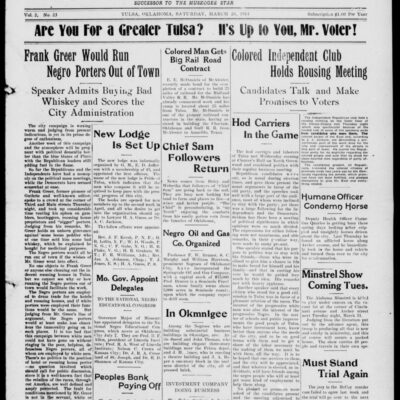
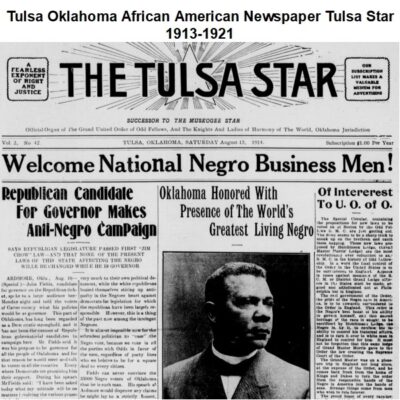
Tulsa Oklahoma African American Newspaper Tulsa Star 1913-1921
$9.90 Add to Cart -
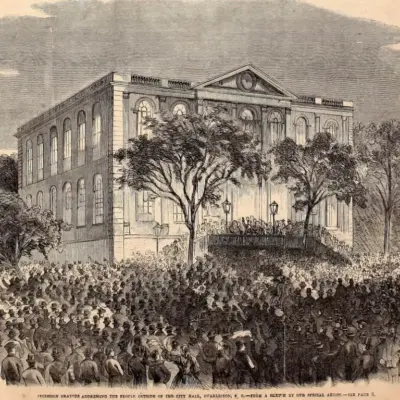
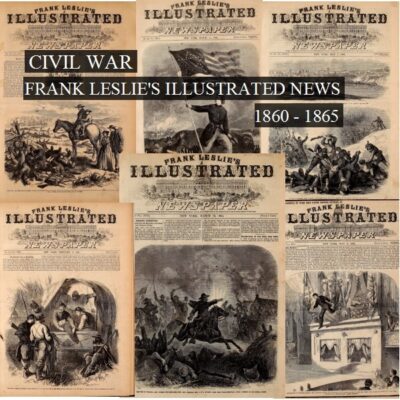
Civil War: Frank Leslie’s Weekly Illustrated Newspaper (1860-1865)
$19.50 Add to Cart -
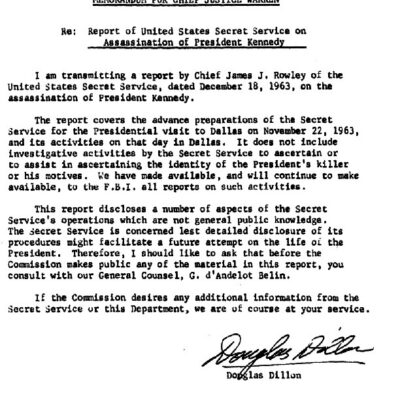
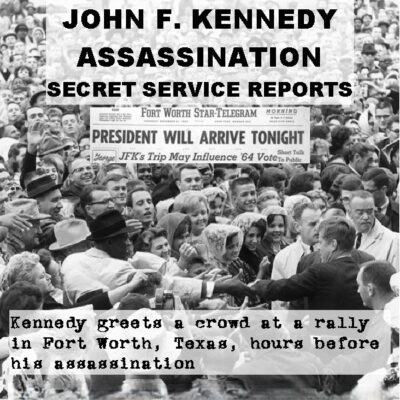
John F. Kennedy Assassination Secret Service Reports
$19.50 Add to Cart -
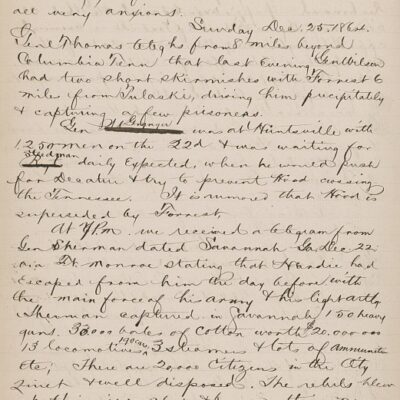
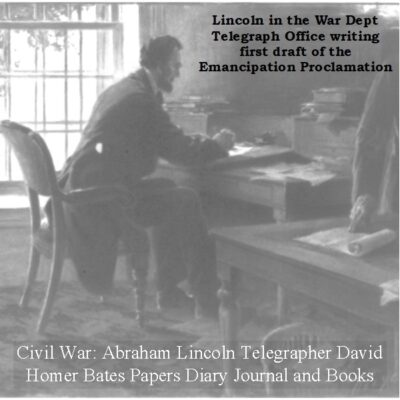
Abraham Lincoln’s Telegrapher David Homer Bates: Papers, Diary, and Books
$19.50 Add to Cart